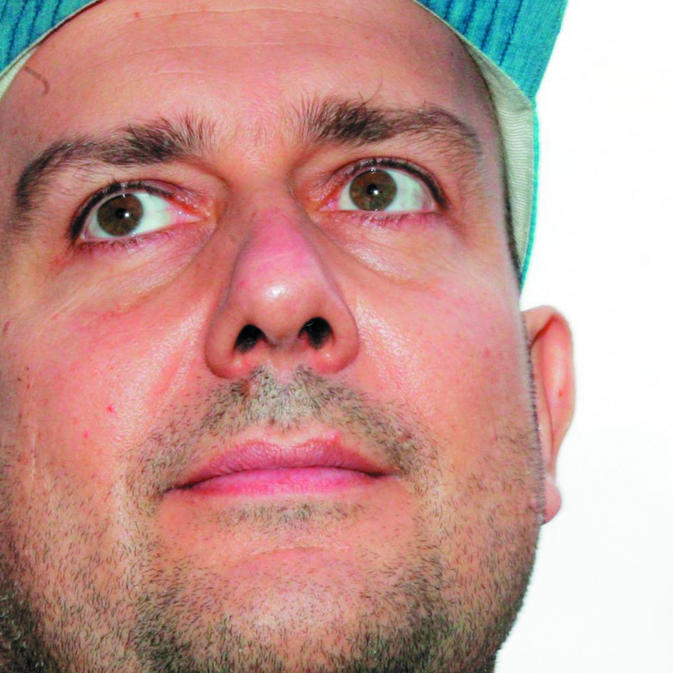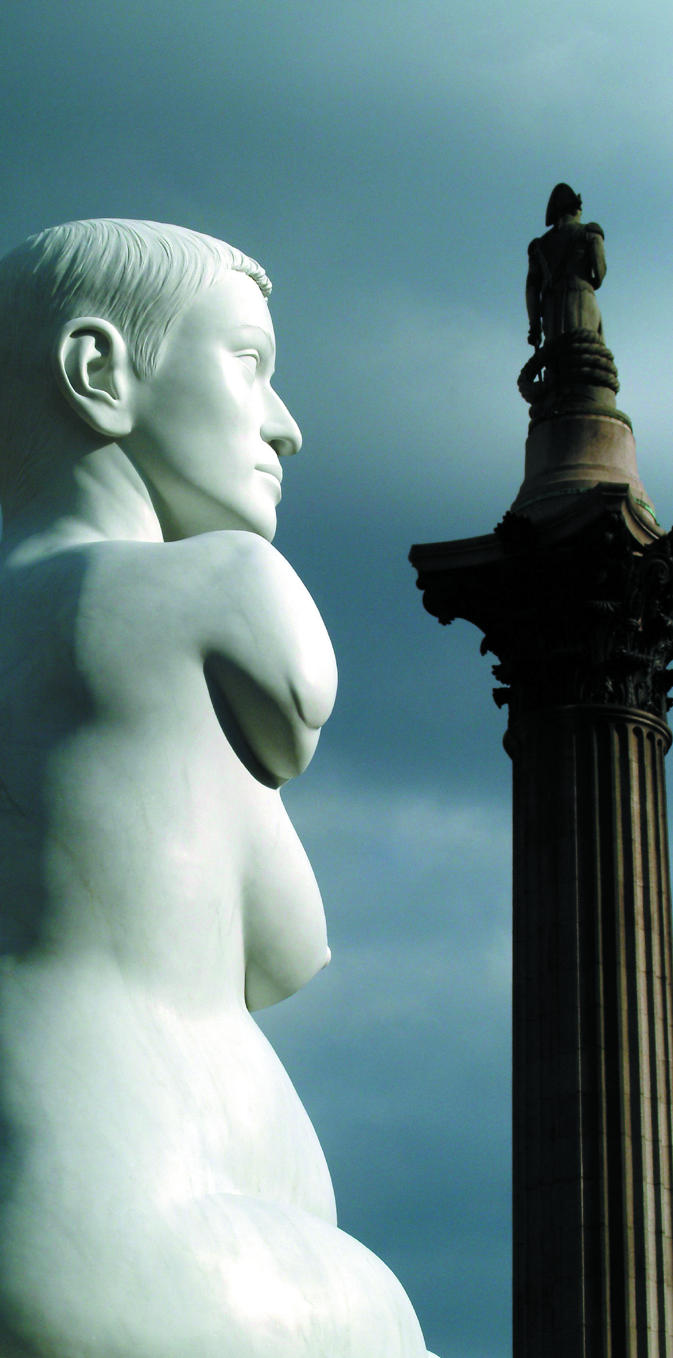Alison Lapper Pregnant is a giant, white Italian marble statue that now occupies the fourth plinth in Trafalgar Square. Few will have missed the extensive media coverage of the unveiling and the subsequent debate about the work and its impact. Marc Quinn, the artist, takes the body, its representation, and fragilities as his main subject. From earlier totemic works such as Self—his famous series of heads made from his own blood—he has recently progressed to working with the bodies of others, in particular those with various disabilities or illnesses. A statue of a young woman with phocomelia soon to give birth now sits centre stage in London. The response to the new public work has been, perhaps predictably, polarised.
Positive comment has centred on the essentially polemical nature of the work. Many think that this highly prominent figure highlights the great inner strength of the model, the fight she has had to gain acceptance in a world largely designed by and for those who are lucky enough to be born able bodied. In turn this bravery in the face of adversity constitutes the beauty of the piece and challenges accepted notions of aesthetic purity when contemplating the human form.
Figure 1.

Focusing on fragility: artist Marc Quinn
Credit: IJO/REX FEATURES
At the other end of the critical spectrum have been those who have taken issue with what the art world calls the “site specificity” of the work, asking why the statue has been placed beside others that celebrate male national heroes. Defenders have been quick to point out that Nelson, high above Alison on his (usually referred to as overly phallic) plinth, also lacked a limb.
It is possible that the more antipathetic, more prudish critics may have recoiled from the sexual nature of the work, which clearly displays what some might wish unseen, the fecundity of someone who just happens to be disabled. This has been viewed as a potentially subversive gesture surrounded as she is by representations of male military might. Other critics have voiced the view that the work lacks ambiguity, that what you see is what you get, and as such carries less resonance than some of Quinn's earlier works that are more open to wider interpretation.
I suspect that a medical audience will bypass many of these arguments. The first word that arises in their collective minds when confronted with phocomelia is... what else?... thalidomide. And following on a close second, another painful word...iatrogenic. Confronting Alison Lapper Pregnant will, for many doctors, induce a queasy sense of guilt, even if they are reassured that the drug was not relevant in her case. Seal-like limbs, those hard clinical signs of pharmacological failure, remind us of a clinical disaster, a brutal lesson learnt in drug development.
Figure 2.

Will the statue induce a queasy sense of guilt in doctors?
Credit: RAY ROBERTS/REX FEATURES
Quinn's last show, Chemical Life Support, at the White Cube gallery in London in March 2005, made explicit reference to medication. Sculptures lay peacefully on the gallery floor and immediately recalled the pumice coated victims of Vesuvius at Pompeii in all their muted melancholy. Quinn constructed the five figures displayed from polymer wax and each was made with hidden ingredients—namely the drugs that kept his models alive. We could not see the medication that he had put into the mix, but the title of each work revealed the illness and its palliative. These titles were as necessary to the meaning of the works as the drugs are to the continued existence of the patients he used as models.
Strikingly each cast gave little clue as to the underlying pathology. With the exception of some slight lipoatrophy in Nicholas Grogan—Insulin (Diabetes) the skin, the surface, unlike in real life, gave little away. You could look carefully, clinically, for signs of disease but find none. Another cast, another patient, Kate Hodgkison—AdcalD3, Folic Acid, Ferrous Sulphate, Methotrexate, Plaquenil, Prednisolone (Lupus) had said condition, but there were no nail changes to be seen, no obvious joint abnormalities. We were reminded that autoimmune conditions are caused by substances that are literally anti-The Body.
The other patients were, respectively, a woman with HIV, a man who was post-heart transplant, and a toddler with milk allergy. All looked as friable and fragile as the body itself is. Here marble was rejected as material, as form, because, one assumed, this would not convey the temporal limit of the subjects.
Quinn's new pieces are a continuation of his work on the body but have more of an agitprop or scientifically educational impact than his earlier autobiographical works. The gamble for the artist is that such ideas may be received as forced or didactic and paradoxically less appreciated as art.


